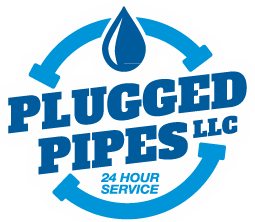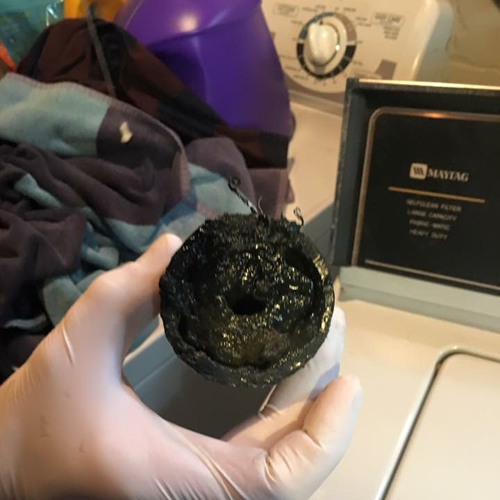How to Prevent Laundry Drain Clogs: Maintenance Tips for Homeowners
Laundry drain clogs are a common household issue that can lead to unpleasant odors, slow drainage, and even water damage. While it might seem like a minor inconvenience at first, neglecting a clogged laundry drain can lead to bigger problems down the road. Fortunately, with regular maintenance and a few preventative measures, you can keep your laundry drain running smoothly. In this blog post, we’ll explore simple yet effective tips to prevent clogs and keep your laundry drain functioning properly.
If you find yourself dealing with persistent laundry drain issues, don’t hesitate to contact professionals like Plugged Pipes, who specialize in resolving drain clogs quickly and effectively.
Common Causes of Laundry Drain Clogs
Before diving into the prevention tips, it’s important to understand what commonly causes laundry drain clogs. Here are a few culprits that may be clogging your laundry drain:
- Lint: One of the primary causes of clogs is lint buildup. Despite the washing machine’s filter, small bits of lint can escape into the drain, accumulating over time and leading to blockages.
- Soap Scum and Detergent Residue: Excess detergent, especially in hard water areas, can cause soap scum to form inside your pipes. This sticky residue mixes with lint and dirt, leading to clogs.
- Grease and Oils: If you wash clothing items with grease or oils (like kitchen towels or workout gear), these substances can accumulate in your pipes, causing further blockages.
Now that you know the culprits, let’s look at how to prevent these from causing clogs in the first place.
Maintenance Tips to Prevent Laundry Drain Clogs
1. Use a Lint Trap
One of the easiest ways to prevent laundry drain clogs is by using a lint trap. These simple mesh or nylon traps are attached to the end of your washing machine’s discharge hose, catching lint before it enters the drain. You can find disposable or reusable options at most hardware stores.
How to use it:
- Simply attach the lint trap to the end of the drain hose, securing it with a zip tie or clamp.
- Regularly check and clean the trap, or replace it when necessary to ensure it continues to work effectively.
2. Clean the Washing Machine Filter Regularly
Many washing machines come equipped with a built-in filter designed to catch debris like lint and small particles. Over time, this filter can become clogged, affecting both the machine’s performance and the drain.
How to clean it:
- Check your washing machine’s manual to locate the filter.
- Remove the filter and clean it with warm water to remove any lint or dirt buildup.
- Make it a habit to clean the filter every month or so, especially if you do frequent laundry loads.
3. Be Mindful of Detergent Usage
Using too much detergent can cause excess suds and soap scum, which can build up in your drain pipes over time. To prevent this:
- Follow the manufacturer’s guidelines on how much detergent to use, and adjust based on the load size.
- If you live in an area with hard water, consider using a water softener or choosing detergent specifically formulated for hard water.
4. Run Hot Water Through the Drain
A simple yet effective way to keep your laundry drain clear is to periodically flush it with hot water. This helps to dissolve any soap scum or grease that may be accumulating in the pipes.
How to do it:
- Once a month, after a laundry load, pour a pot of boiling water down the drain.
- For extra cleaning power, add a mixture of baking soda and vinegar before flushing with hot water. Let the mixture sit for 10-15 minutes, then rinse with hot water to clear any remaining residue.
5. Inspect the Drain Hose
Over time, your washing machine’s drain hose can develop kinks, clogs, or even become loose. These issues can obstruct water flow and lead to slow drainage or backup.
How to inspect it:
- Periodically check the drain hose for any kinks or bends that may impede water flow.
- Disconnect the hose and flush it with water to clear any debris or buildup.
- Ensure the hose is securely connected to prevent leaks or loose connections.
When to Call a Professional
While these maintenance tips can go a long way in preventing laundry drain clogs, sometimes the issue goes beyond DIY solutions. If your drain is still slow or clogged despite your efforts, it may be time to call in a professional plumber.
Signs you need expert help:
- Persistent slow drainage or water backups.
- Bad odors coming from the laundry drain despite regular cleaning.
- Water damage or leaks near your washing machine or drain pipes.
For homeowners dealing with stubborn drain issues, Plugged Pipes offers expert plumbing services that can resolve even the toughest clogs. Whether it’s lint, grease, or other debris causing the problem, their team has the tools and expertise to get your laundry drain back to normal.
Prevent Future Drain Clogs with Regular Maintenance
Regular maintenance is key to keeping your laundry drain clear and functional. By following these simple tips—using a lint trap, cleaning filters, flushing with hot water, and being mindful of detergent usage—you can avoid clogs and ensure your washing machine runs smoothly.
However, if a drain issue does arise, don’t hesitate to reach out to professionals like Plugged Pipes to handle the problem quickly and effectively. A well-maintained drain not only prevents inconvenient clogs but also protects your home from potential water damage.
Keep your laundry room worry-free by staying proactive and keeping your drains clean!

